Facial Expressions & Zoom
Throughout my career, I have fully come to understand the power of facial expressions. They have always been a big part of my ability to get my point across. I was not always good at them and I really learned the hard way.
Things were going well in my career and I was asked to represent the United States at the International Clown Festival in Nagasaki, Japan. I agreed and was thrilled, yet I had no idea how to speak Japanese. The only way I was going to get my show over to the audience was to become efficient in using body language, especially facial expressions. As the saying goes…If you are happy and you know it then your face will truly show it!
Here are some thoughts and tips to guide you to being better at facial expressions.
FACIAL EXPRESSIONS – The proper facial expression will add emphasis to all virtual presentations
- Use your face to your advantage – It can be your best tool.
- Set the mood with proper expressions
- Use facial expressions to support points
- Practice making facial expressions naturally
The expression on your face reinforces what you are saying, adds subtle character to your meaning, and can go a long way toward keeping the attention of your audience.
Animated facial expressions are potent tools for involving your audience with you as a virtual presenter. Research has shown that an extremely high percentage of learning takes place through the sense of sight. In fact, we are told that the average person learns 83% by seeing.
Hearing is next highest with only 13%. As virtual presenters, those figures should have a tremendous impact on what we do. Obviously, we must give our listeners something to see as well as to hear. They must go together.
Tips to keep in mind: (Learn to be an actor).
- Maintain an overall pleasant countenance – even if talking about a profoundly serious subject.
- Presenters who frown and grimace make audience members uncomfortable.
- Make sure what you are saying with your face matches what you are saying with your words.
- If the two do not match, the result can be confusing to the audience.
- Facial expressions can be skillfully used to produce laughter, since incongruity is one form of humor.
- Use your facial expressions with reinforcing gestures as a double whammy to get and keep the crowd’s attention.
- Practice in front of a mirror of video tape yourself!
- Your facial expressions should appear natural and spontaneous, not forced, or contrived.
Let’s schedule a time to talk about presentation skills and what they can do for your personal and professional growth.
